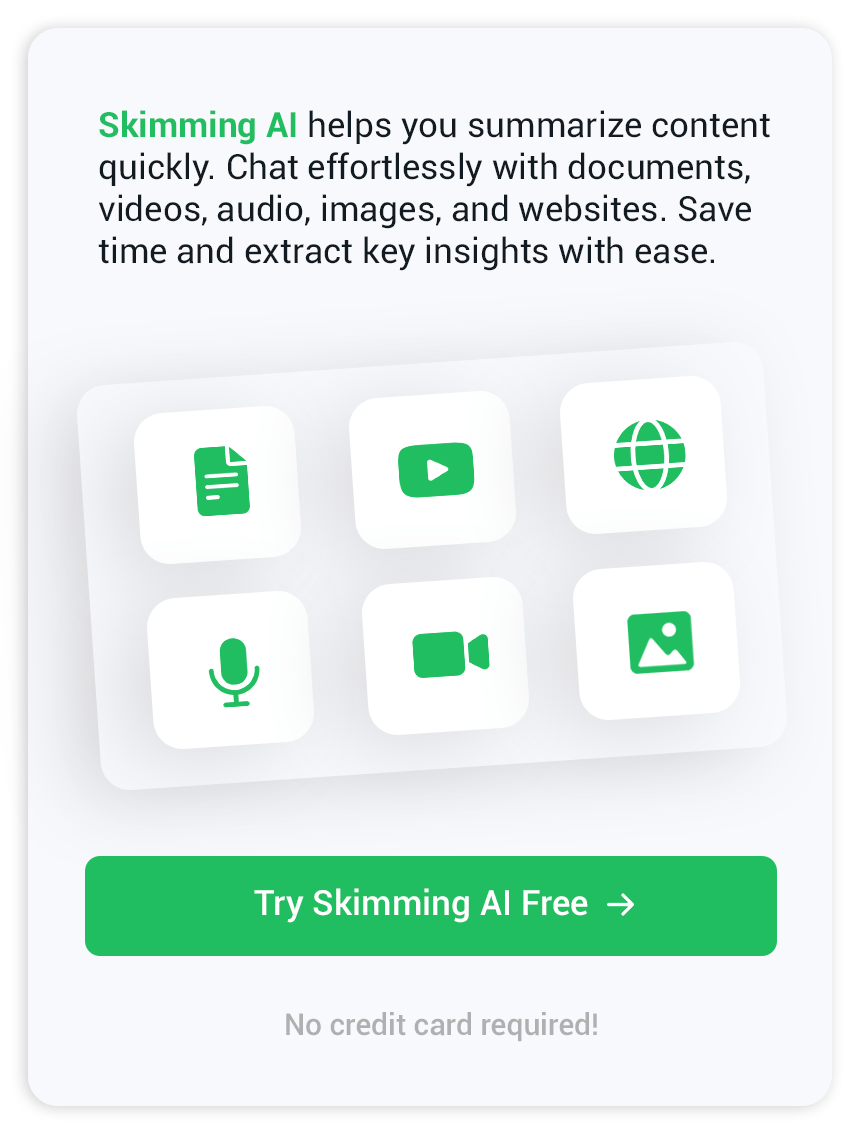AI Photo Summarizer Tools and Techniques for Effortless Visual Understanding
Understanding the AI Photo Summarizer
An AI photo summarizer transforms pictures into short, clear text that captures the scene, the context, and any visible text. It combines optical character recognition with vision-language models, integrating object detection, captioning, and language generation in a single pass. The result is a line or two that lets you grasp a photo at a glance, whether it is a handwritten memo, a chart, or a snapshot of a crowded street.
Why this matters
- Speedy comprehension of dense visuals without scrolling or zooming
- Inclusive content for users who rely on screen readers
- Handy search and indexing once the text is saved in a knowledge base
- Reduced cognitive load during research or content curation
The core workflow
- Ingest – upload or paste a URL.
- Extract – OCR lifts any embedded text.
- Analyze – the vision model tags people, objects, layout, color palette, and mood.
- Summarize – the language model writes a tight paragraph or bullet list.
A growing number of services package those steps behind a drag-and-drop panel, powered by cloud GPUs and tuned for everyday formats such as JPG and PNG.
How AI Generates a Visual Summary
Multimodal attention
Modern photo summarization AI utilizes an encoder to map pixels to tokens, and then feeds that output to a decoder trained on captions and alternative text. The decoder ranks tokens by probability and strings them into natural language. Context heads look for relationships: who is doing what, where, and why.
Compact wording and context trimming
A good summarizer sticks to the essentials. Language penalties discourage repetition, while length constraints guard against verbosity. Some services, including the visual summary generator inside Skimming.ai, allow you to set a target length or audience tone, ensuring the output fits a caption box, a lecture note, or an accessibility tag.
Handling text-heavy images
Charts, whiteboards, and screenshots carry stacked phrases that matter as much as the picture itself. Here, the pipeline first runs OCR, groups lines into zones, and then feeds both the text and the pixel map into the decoder. This hybrid route boosts fidelity when the accuracy of headings, labels, or data points is vital.
Key Features to Look For
Batch processing
An automatic image summarizer that supports folders or zip uploads can save hours on a photography shoot or fieldwork session. Batch mode often pairs with CSV export so you can analyze summaries in your preferred spreadsheet or BI tool.
Multilingual output
Global teams gain from tools that translate on the fly Skimming AI free image summarizer, for instance, supports more than twenty languages and lets you re-surface the same caption in Spanish, French, or Japanese without re-uploading the file.
Privacy and encryption
If you handle sensitive material—such as legal exhibits, medical scans, or R&D boards—seek a platform that encrypts uploads end-to-end and deletes temporary files after the session ends. Look for regional hosting assurances if data sovereignty is a concern.
Flexible prompts
Some workflows require a brief alt text, while others necessitate a more detailed paragraph of text. A prompt box allows you to adjust the tone, level of detail, and reading age. PictureToSummaryAI and iWeaver both offer preset styles such as "brief note," "marketing caption," or "academic abstract."
AI Photo Summarizer Tools for 2025
Skimming AI Image Summarizer
Skimming AI free image summarizer shines with an intuitive dashboard and instant chat follow-ups. After the first outline appears, you can ask, "Highlight brand names" or "Translate to German," and the model refines the text within seconds. The tool supports chart snapshots and Instagram posts alike, and its mobile view is polished for quick field notes.
NoteGPT
NoteGPT combines image captioning and text extraction in a single panel. It's a three-step wizard—upload, extract, summarize—that keeps the learning curve near zero. User testimonials highlight its value for contract reviews and lecture recaps.
PictureToSummaryAI
This service emphasizes creative control through custom prompts. Marketers can request slogan-style lines; photographers can aim for story-rich descriptions. A playground mode displays live examples, helping first-time users determine the optimal length.
iWeaver
Researchers flock to iWeaver for its batch mode and file export set. Once summaries land in a dataset, you can query them with the site's chat agent, turning a stack of lab diagrams into bite-sized insights.
StudyHobby
StudyHobby pairs summaries with quiz generation. Upload a textbook figure, grab the condensed note, then auto-spawn flashcards that cement learning. Teachers praise its camera integration for on-the-fly classroom captures.
Real-World Workflows
Content curation
Social media teams often juggle thousands of user photos. An AI image description engine categorizes them by theme and identifies trending keywords, making campaign planning data-driven rather than intuition-driven.
Research audits
Academics digitize whiteboard sketches or microscope slides, then feed the resulting text into citation managers—the summarizer tags dominant concepts, enabling literature reviews to be completed more efficiently.
Compliance review
Legal teams scan signed forms, extract paragraphs with OCR, and attach a top-line summary that flags parties, jurisdiction, and dates. A visual summarizer speeds that triage, freeing specialists for deeper analysis.
Tips for Sharper Summaries
- Use well-lit, high-contrast photos to aid object detection.
- Crop unneeded borders; extra pixels dilute attention scores.
- Set a word cap in the prompt to avoid drift.
- Verify named entities when summarizing regulated content.
- Keep an archive of original images so you can retrain or fine-tune as models evolve.
Final Thoughts
The rise of AI photo summarizer platforms makes visual knowledge as searchable as text. Whether you need quick captions for a website, concise notes from a lab camera, or annotated archives for accessibility, the right combination of OCR, vision transformers, and language models puts the gist of any picture at your fingertips. Start testing one of the tools above, refine your prompt style, and watch routine image handling shrink from minutes to moments.


